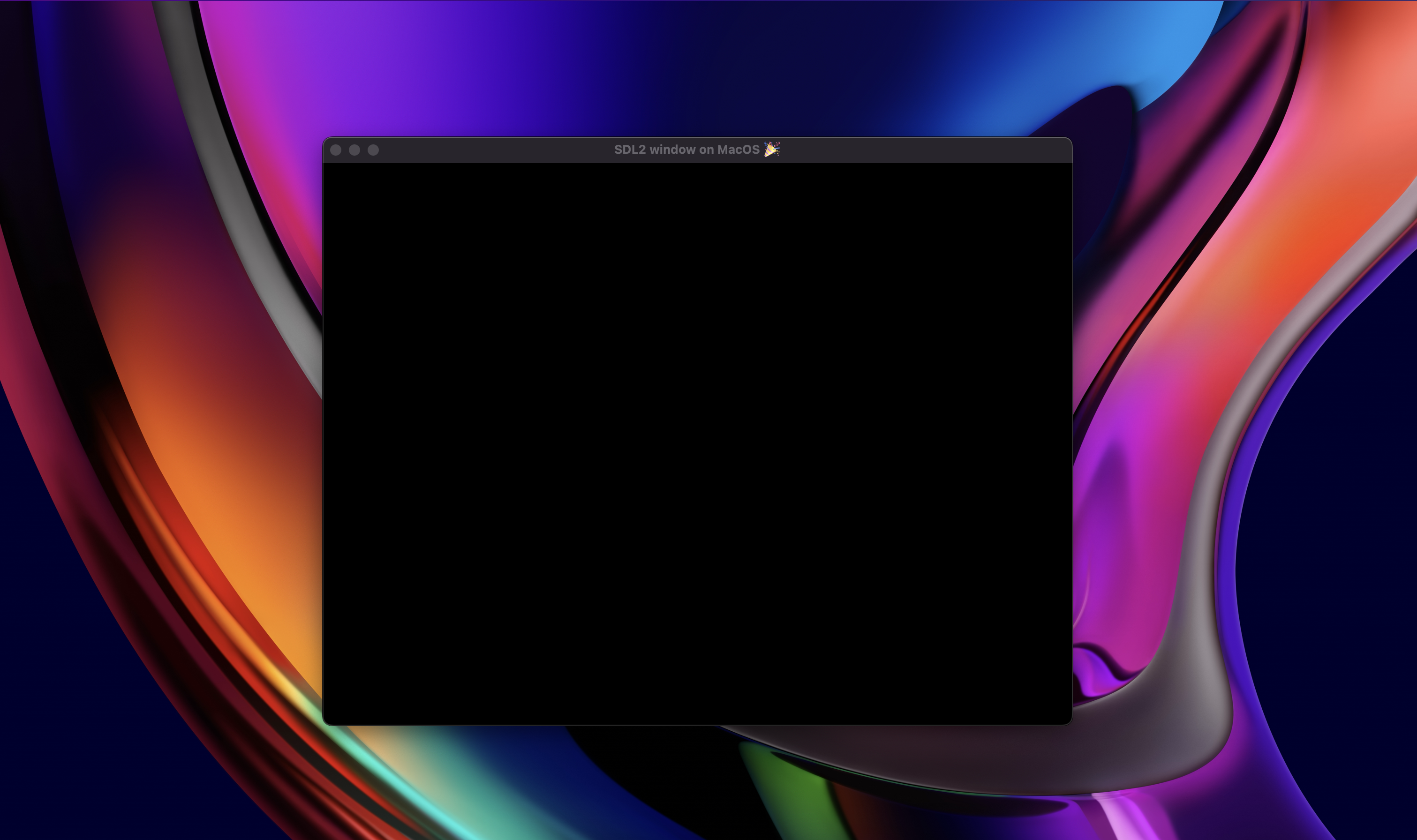Running SDL2 libraries on macOS is slightly different than running them on Linux and Windows systems.
You might want to run these libraries to work on a native application or a video game that requires graphics and access to other system controls.
Since there are a few pitfalls to avoid I have put this resource together that covers installing SDL2 and SDL2_image into the system.
Finally, I’ll include a test program to open a window and a command to compile it.
It is written in C but SDL can be used with C++, Rust and a few other languages as well.
Installation
The first step is to get all files required into your system.
Download SDL2 by picking the .dmg one from the release list:
https://github.com/libsdl-org/SDL/releases
Additionally, download the SDL2_image library (also a .dmg from its release list:
https://github.com/libsdl-org/SDL_image/releases
Execute the SDL2 file (will be named something similar to SDL2-2.30.4.dmg) and a window will open with a few files and an SDL2.framework folder.
Open Finder, click Go then Go to folder... and type /Library/Frameworks which will open the contents of that folder. Drag SDL2.framework to /Library/Frameworks and repeat the steps for the SDL2_image file.
There should be two additional folders in /Library/Frameworks, SDL2.framework and SDL2_image.framework.
Compile a program
One way to test the installation is to write a program, this one opens a window in the system.
Create a main.c file and add the contents below to it:
#include <stdio.h>
#include <stdbool.h>
#include <SDL.h>
#include <SDL_timer.h>
int main(void)
{
// Attempt to initialize graphics and timer system.
if (SDL_Init(SDL_INIT_VIDEO|SDL_INIT_TIMER) != 0)
{
printf("error initializing SDL: %s\n", SDL_GetError());
return 1;
}
SDL_Window* window = SDL_CreateWindow("Hello, SDL2 on macOS 🍎",
SDL_WINDOWPOS_CENTERED,
SDL_WINDOWPOS_CENTERED,
640, 480, 0);
if (!window)
{
printf("error creating window: %s\n", SDL_GetError());
SDL_Quit();
return 1;
}
// Keep the window open, in this case SDL_Delay(5000); statement won't work.
bool running = true;
while (running)
{
SDL_Event e;
while (SDL_PollEvent(&e) != 0)
{
if (e.type == SDL_QUIT)
{
running = false;
break;
}
}
}
// clean up resources before exiting.
SDL_DestroyWindow(window);
SDL_Quit();
}On a terminal window, navigate to the same directory of the main.c file and attempt to compile it:
gcc -o open_window main.o `sdl2-config --libs --cflags` -ggdb3 -O0 --std=c99 -Wall -F/Library/Frameworks -framework SDL2 -framework SDL2_image -lmThis could work first try but in my case I’ve hit quite a few issues a few are solved by the way the header files are included and the structure of the compile command which have already been addressed but there’s a few more I found while trying to compile an SDL2 based program.
One of the issues might look like this:
dyld[94016]: Library not loaded: @rpath/SDL2.framework/Versions/A/SDL2
Referenced from: <BAD3873A-39CC-4033-8C2A-85A0FC365404> /Users/user/Projects/open_window/open_window
Reason: no LC_RPATH's found
[1] 94016 abort ./open_windowThe way I solved it was by running the following in the terminal before compiling the program:
export DYLD_FRAMEWORK_PATH=/Library/FrameworksmacOS displays a notice saying “SDL2.framework” cannot be opened because the developer cannot be verified
The issue can be addressed by running the executable, e.g. ./open_window then opening the Privacy & Security settings and scroll to Security.
You will see a button to allow the SDL2.framework, click “Allow Anyway”.
Do the same for SDL2_image.framework if it shows up.
The notice should now show an “Open” option, there’s more context in this Github issue:
https://github.com/libsdl-org/SDL/issues/4689#issuecomment-2189963510
Opening a window
Assuming the program compiled correctly we can now open a window by executing the program.
On a terminal run ./open_window and an empty should should now show!

Additional Notes
- A lot of programs will use
#include <SDL2/SDL.h>but in this case#include <SDL.h>needs to be used instead when including SDL related header files.